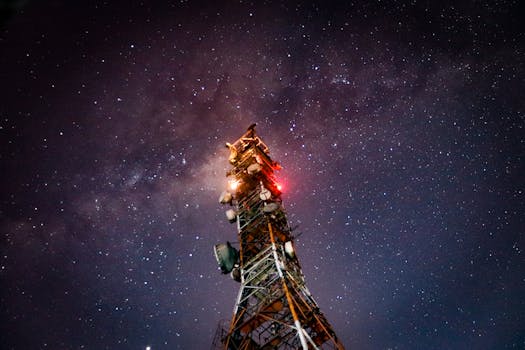
MEO Satellites: Revolutionizing Global Communication with Medium Earth Orbit Technology
MEO satellites, or Medium Earth Orbit satellites, are a type of satellite that operates in an orbit between 2,000 and 36,000 kilometers above the Earth’s surface. This orbit is higher than Low Earth Orbit (LEO) satellites, which operate at an altitude of around 160 to 2,000 kilometers, and lower than Geostationary Orbit (GEO) satellites, which operate at an altitude of around 36,000 kilometers. MEO satellites are designed to provide a range of services, including navigation, communication, and Earth observation.
MEO satellites are becoming increasingly popular due to their unique combination of benefits. They offer a wider coverage area than LEO satellites, making them ideal for applications that require global or regional coverage. At the same time, they have a lower latency than GEO satellites, making them suitable for applications that require real-time communication. This makes MEO satellites an attractive option for a range of industries, including telecommunications, navigation, and Earth observation.
How MEO Satellites Work
MEO satellites work by transmitting and receiving signals to and from Earth stations or other satellites. They use a range of frequencies, including L-band, C-band, and Ku-band, to provide a range of services. The satellites are typically equipped with a range of instruments, including antennae, transponders, and propulsion systems. They are also equipped with solar panels to provide power and batteries to store energy for when the satellite is in the Earth’s shadow.
The operation of MEO satellites is complex and requires careful planning and management. The satellites must be launched into the correct orbit and then maneuvered into their final position. They must also be maintained and updated regularly to ensure they continue to operate effectively. This requires a range of ground-based systems, including Earth stations, control centers, and maintenance facilities.
Applications of MEO Satellites
MEO satellites have a range of applications, including navigation, communication, and Earth observation. One of the most well-known applications of MEO satellites is the Global Positioning System (GPS), which provides location and timing information to users around the world. MEO satellites are also used for communication, providing internet and phone services to remote and underserved areas. They are also used for Earth observation, providing images and data on the Earth’s surface and atmosphere.
MEO satellites are also being used for a range of emerging applications, including the Internet of Things (IoT) and 5G networks. They are being used to provide connectivity to IoT devices, such as sensors and drones, and to provide backhaul services for 5G networks. This is enabling a range of new use cases, including smart cities, autonomous vehicles, and industrial automation.
Benefits of MEO Satellites
MEO satellites offer a range of benefits, including global coverage, low latency, and high capacity. They are ideal for applications that require real-time communication and global coverage, such as navigation and communication. They are also more resistant to interference and jamming than LEO satellites, making them a more secure option for sensitive applications.
MEO satellites are also more cost-effective than GEO satellites, as they require less power and have a longer lifespan. They are also more flexible than GEO satellites, as they can be easily reconfigured to provide different services and coverage areas. This makes them an attractive option for a range of industries, including telecommunications, navigation, and Earth observation.
In conclusion, MEO satellites are a type of satellite that operates in an orbit between 2,000 and 36,000 kilometers above the Earth’s surface. They offer a range of benefits, including global coverage, low latency, and high capacity, making them ideal for applications that require real-time communication and global coverage. They are being used for a range of applications, including navigation, communication, and Earth observation, and are being used for emerging applications such as the Internet of Things and 5G networks.



